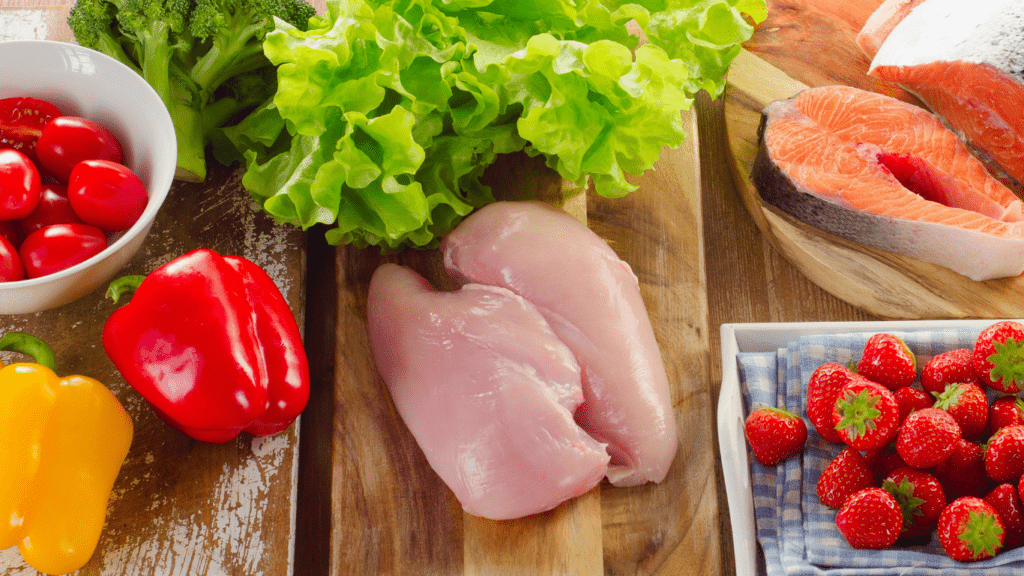Understanding Pet Nutrition
Understanding pet nutrition is crucial to ensure that pets receive the right balance of nutrients to maintain their health and well-being. Proper knowledge helps in making informed decisions when selecting their food.
Key Nutrients for Dogs and Cats
Dogs and cats need various nutrients to stay healthy. Proteins, fats, carbohydrates, vitamins, and minerals are essential components of their diet:
- Proteins: Proteins provide amino acids necessary for growth and repair. Chicken, beef, and fish are common protein sources.
- Fats: Fats supply energy and support cell function. Omega-3 and Omega-6 fatty acids found in fish oil and flaxseed improve skin and coat health.
- Carbohydrates: Carbohydrates offer a quick energy source. Brown rice, sweet potatoes, and peas are good examples.
- Vitamins: Vitamins support metabolic functions and immune health. Vitamin A, D, E, and K serve various roles in body processes.
- Minerals: Minerals like calcium and phosphorus strengthen bones and teeth. Iron and zinc aid in cellular function and immune response.
Importance of Water in Pets’ Diets
Water is vital for all living beings, including pets. It supports digestion, nutrient absorption, and waste elimination. Minimum daily water intake should be:
- Dogs: Dogs generally need about 1 ounce of water per pound of body weight daily. Increased activity levels or hot weather may raise this need.
- Cats: Cats often drink less water than dogs. Wet food can assist in maintaining their hydration. They typically need around 3.5 to 4.5 ounces of water daily, varying by weight and activity.
Ensuring fresh, clean water is available at all times helps pets stay hydrated and healthy.
Foods to Avoid Feeding Your Pets
Certain foods can seriously harm pets. Both dogs and cats have specific dietary restrictions that owners must be aware of to prevent potential health issues.
Toxic Foods for Dogs
Some foods are extremely dangerous for dogs.
Chocolate contains theobromine, which dogs can’t metabolize, leading to vomiting, diarrhea, and even heart issues.
Grapes and raisins can cause acute kidney failure, though the exact substance causing this reaction is unknown.
Onions and garlic destroy red blood cells, resulting in anemia.
Fatty foods like bacon, ham, and fried foods can trigger pancreatitis.
Avocado contains persin, which is toxic to dogs and can cause vomiting and diarrhea.
Here’s a concise table highlighting these foods:
| Food | Harmful Component | Potential Effects |
|---|---|---|
| Chocolate | Theobromine | Vomiting, diarrhea, heart issues |
| Grapes/Raisins | Unknown | Acute kidney failure |
| Onions/Garlic | Thiosulfate | Anemia |
| Bacon/Ham | High Fat | Pancreatitis |
| Avocado | Persin | Vomiting, diarrhea |
Toxic Foods for Cats
Like dogs, cats have their risks with certain foods. Onions, garlic, and chives can damage red blood cells and cause gastrointestinal upset. Raw eggs might lead to salmonella or E. coli infection. Chocolate and caffeine contain methylxanthines, causing vomiting, tremors, and seizures. Alcohol severely impacts their liver and brain, even in small amounts. Bones, particularly cooked ones, can splinter and cause obstructions or lacerations in the digestive tract.
Here’s a table summarizing the harmful foods for cats:
| Food | Harmful Component | Potential Effects |
|---|---|---|
| Onions/Garlic | Thiosulfate | Anemia, gastrointestinal distress |
| Raw Eggs | Pathogens (Salmonella, E. coli) | Infection |
| Chocolate | Methylxanthines | Vomiting, tremors, seizures |
| Caffeine | Methylxanthines | Vomiting, tremors, seizures |
| Alcohol | Ethanol | Liver and brain damage |
| Bones | Sharp Fragments | Obstructions, digestive tract damage |
By avoiding these toxic foods, pet owners can help ensure the safety and health of their furry companions.
How to Choose the Right Pet Food

Selecting the right pet food ensures your pet receives the necessary nutrients. Focus on reading labels and considering your pet’s age, weight, and health conditions.
Reading Pet Food Labels
Pet food labels offer critical information about ingredient quality. Look for protein sources like chicken, beef, or fish. Avoid generic terms like “meat” or “animal by-products”. Ensure the first ingredient is a quality protein source.
Ingredients lists reveal nutrient content. Carbohydrates such as rice, barley, or sweet potatoes should be mentioned. Check for added vitamins and minerals like Vitamin E or calcium. Avoid artificial preservatives, colors, and flavors that don’t provide nutritional value.
The Role of Age, Weight, and Health Conditions
Age, weight, and health conditions significantly influence the choice of pet food. Puppies and kittens require diets high in protein and fat for growth. Adults need a balanced diet to maintain optimal weight, while seniors benefit from foods formulated for joint health and lower calorie intake.
Weight management involves selecting calories-appropriate food. For overweight pets, look for labeled “light” or “weight management” foods. Underweight pets might need higher-calorie options.
Health conditions also demand specific nutritional formulations. Pets with kidney issues require low-phosphorus diets. Diabetic pets need high-fiber, low-sugar foods. Consult a veterinarian for tailored dietary advice based on health concerns.
Supplementing Your Pet’s Diet
Supplements can address specific nutritional gaps in your pet’s diet. However, understanding when and what to supplement is crucial.
When Are Supplements Necessary?
Supplements become necessary if your pet’s diet lacks certain nutrients. Older pets, for instance, might need joint supplements like glucosamine and chondroitin.
Pets with medical conditions, such as skin allergies, may benefit from omega-3 fatty acids. A veterinarian can determine if your pet requires specific supplements based on its health status, age, and dietary intake.
Some common supplements include:
- Probiotics: For digestive health and enhanced immune function.
- Omega-3 Fatty Acids: For skin health, shiny coats, and inflammation reduction.
- Glucosamine and Chondroitin: For joint health, especially in older pets.
- Multivitamins: To cover any potential nutritional deficiencies in their regular diet.
Risks of Over-Supplementation
Over-supplementation poses risks to your pet’s health. Excessive vitamins or minerals can lead to toxicity. For instance, too much vitamin A can cause bone problems in cats, and high levels of calcium can lead to skeletal issues in dogs.
Pets on a balanced diet typically receive all necessary nutrients, so adding supplements without professional advice can be harmful. Regular check-ups with a veterinarian ensure your pet’s diet remains balanced and safe, avoiding unnecessary or excessive supplementation.


